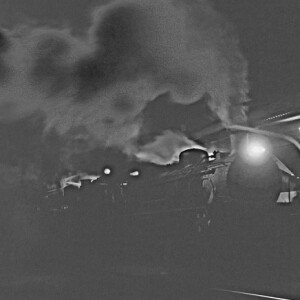The Ghost Train From Grahamstown. Leitz Elmar 50mm
This is another image from July, 1979, taken in Grahamstown, - now Makhanda - South Africa. I have scanned, and then passed the file through Topaz AI software to bring it into the Digital Age. It was originally captured on High Speed Ektachrome, rated at a scorching 200 ISO. The colors on the slide were distorted with a green/blue glow caused by the fluorescent lighting in the station. It looks much better in monochrome.
I was reminded of this image by a series of photographs I saw online during the week. It showed the total destruction of the beautiful sandstone station building, dating from 1879 when the railway reached Grahamstown. This very busy branch line closed permanently in the early 2,000s. The station building sat unused for years, and the vandalism started. Today, there isn't much left, just the original sandstone walls. It's very sad to see.
There was, back in 1979, a passenger train which left the pristine Grahamstown station at 20:00 every evening to make the 40 mile trip to the junction with the Cape Midlands Mainline at Alicedale. At a sedate crawl, it took about five to six hours to cover that distance. That's leisurely, even taking into account the severe 1 in 40 grades on the line. Then, through-passengers who had booked a mainline connection, were left in their carriages - with or without steam heat in the middle of winter -, until they were coupled onto the mainline train. I never made this trip, but it has all the hallmarks of adventure and romance that railway journeys can offer. I would have reveled in every moment of it.
My image seems to have captured the exact moment when the steam locomotive began to roll: all the passengers are on board, the platform is deserted. Just another evening at the little station, a ghostly memory from a time past.
After the fact, I discovered another slide in my archive, also taken in July, 1979. I've added it as an Extra. This train has two locomotives, but there just wasn't enough light. Maybe a modern digital sensor would have done better... It has some historical value because the Grahamstown station nameboard is clearly visible.
I have previously described the Grahamstown Branch in some detail here.


Comments
Sign in or get an account to comment.


